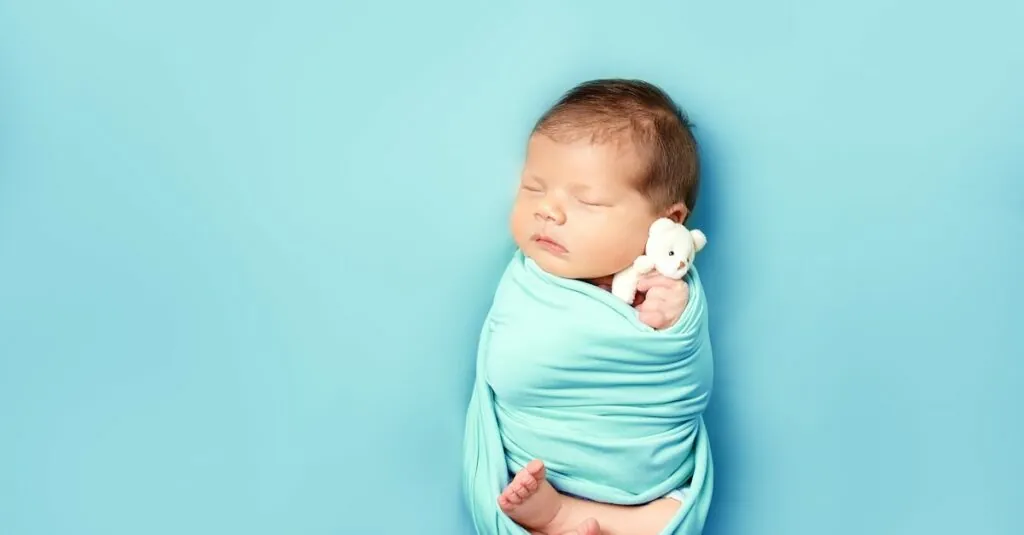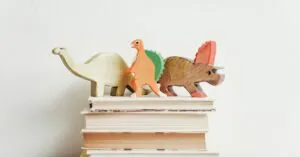Table of Contents
ToggleEvery parent knows the sweet sound of a baby sleeping peacefully in their crib, but just when does that little bundle of joy decide it’s time to transition to a big-kid bed? It’s a question that keeps many parents up at night—well, that and the sound of tiny feet pitter-pattering at 3 AM.
Typically, babies make the leap from crib to bed between 18 months and 3 years. But hold your horses! Factors like safety, personality, and the dreaded escape artist phase come into play. As parents navigate this milestone, they’ll find themselves juggling excitement, anxiety, and maybe even a few giggles along the way. So, let’s dive into the signs that signal it’s time to bid farewell to the crib and embrace the world of toddler beds.
Understanding Crib Sleep Patterns
Crib sleep patterns vary widely among children. Understanding these patterns helps parents make informed decisions about the timing of transitions.
Typical Age Range for Crib Use
Most children remain in cribs until they’re between 18 months and 3 years old. Transitioning too early may disrupt their sleep routine. Maximum safety and comfort often influence the timing of this change. Parents should consider allowing their child ample time in the crib for secure sleeping. Individual growth and development can vary, so some children may use cribs longer than others.
Signs Your Baby Is Ready for a Transition
Several signs indicate that a baby might be ready to transition. Attempting to climb out of the crib often signals readiness for a big-kid bed. Frequent wake-ups or changes in sleeping patterns might suggest a need for more space. Displaying increased mobility during sleep can also be a telling sign. Showing interest in sleeping arrangements seen in others indicates their readiness for a new sleep environment. Each child is unique, so parents should pay attention to these cues.
Factors Influencing Transition
Several elements influence when babies stop sleeping in cribs. Notably, developmental milestones play a crucial role in this transition.
Baby’s Developmental Milestones
Baby’s growth significantly impacts the timing of transitioning from a crib. Physical skills such as climbing and increased mobility can indicate readiness. Many children show tendencies to escape their cribs around 18 months to 3 years. Cognitive development also matters; curiosity about the environment can encourage a change to a big-kid bed. Observing these milestones can help parents determine the right timing. Each child’s development varies, meaning some may require more time in their crib for secure sleep.
Parenting Styles and Decisions
Parenting approaches profoundly affect the transition from crib to bed. Some parents prefer a strict schedule, promoting timely movement based on age. Others adopt a more flexible method, waiting for cues from their child before making any changes. Decisions regarding room sharing or sibling dynamics also influence this process. Safety concerns remain a priority, leading some parents to delay the switch until they feel their child is ready. Individual family dynamics play a significant role as well, shaping when a child leaves the crib.
Alternatives to Cribs
Parents often consider several options when transitioning their children from cribs. These alternatives can provide comfort and independence for toddlers.
Toddler Beds
Toddler beds are designed specifically for young children, featuring low frames and guardrails for safety. These beds typically accommodate a standard crib mattress, offering familiarity for the child. Easy access encourages toddlers to climb in and out with confidence. Various designs appeal to children, including themes and colors that resonate with their interests. Safety standards are met, ensuring parents can trust the quality of these beds. Many parents find that toddler beds ease the transition by allowing their kids to maintain a sense of security while promoting independence.
Floor Beds
Floor beds offer a unique approach, allowing children to sleep close to the ground. This option encourages freedom of movement and exploration, promoting self-awareness while sleeping. Parents can create a cozy sleep area using a mattress or soft bedding on the floor. Room design plays a crucial role; keeping the space child-friendly enhances safety and comfort. This alternative fosters a sense of security and autonomy, catering to toddlers’ developmental needs. Many caregivers appreciate the flexibility and adaptability of floor beds as their children grow and their sleep patterns evolve.
Safety Considerations
Transitioning from crib to big-kid bed involves key safety considerations. Parents must ensure their child’s new sleeping environment is secure to promote safe sleep.
Preventing Falls
To prevent falls, select a bed with a low height. Lower beds reduce the distance a child could fall. Guardrails along the sides offer added protection and keep children from rolling out. Check the spacing between slats to ensure they meet safety standards, as wide gaps can pose a risk. Transitioning with caution helps avoid accidents during this significant change.
Choosing the Right Sleep Environment
Consider the overall sleeping environment before making the switch. Soft bedding, pillows, and toys can create hazards, so keep the bed area free of unnecessary items. Assess the room for potential dangers, such as windows or furniture that could cause injury. Dim lighting encourages a calming atmosphere, which can help with sleep. Create a cozy space that fosters independence while maintaining safety.
Transitioning from a crib to a big-kid bed marks an important phase in a child’s growth. Parents should pay close attention to their child’s unique signs of readiness while considering safety and comfort. Each child’s journey is different and influenced by various factors such as developmental milestones and family dynamics.
Choosing the right time for this transition can set the stage for better sleep habits and independence. By understanding the options available and prioritizing safety, parents can confidently navigate this significant milestone, ensuring a smooth shift for both themselves and their little ones. Embracing this change can lead to a rewarding experience that supports a child’s growing autonomy.






